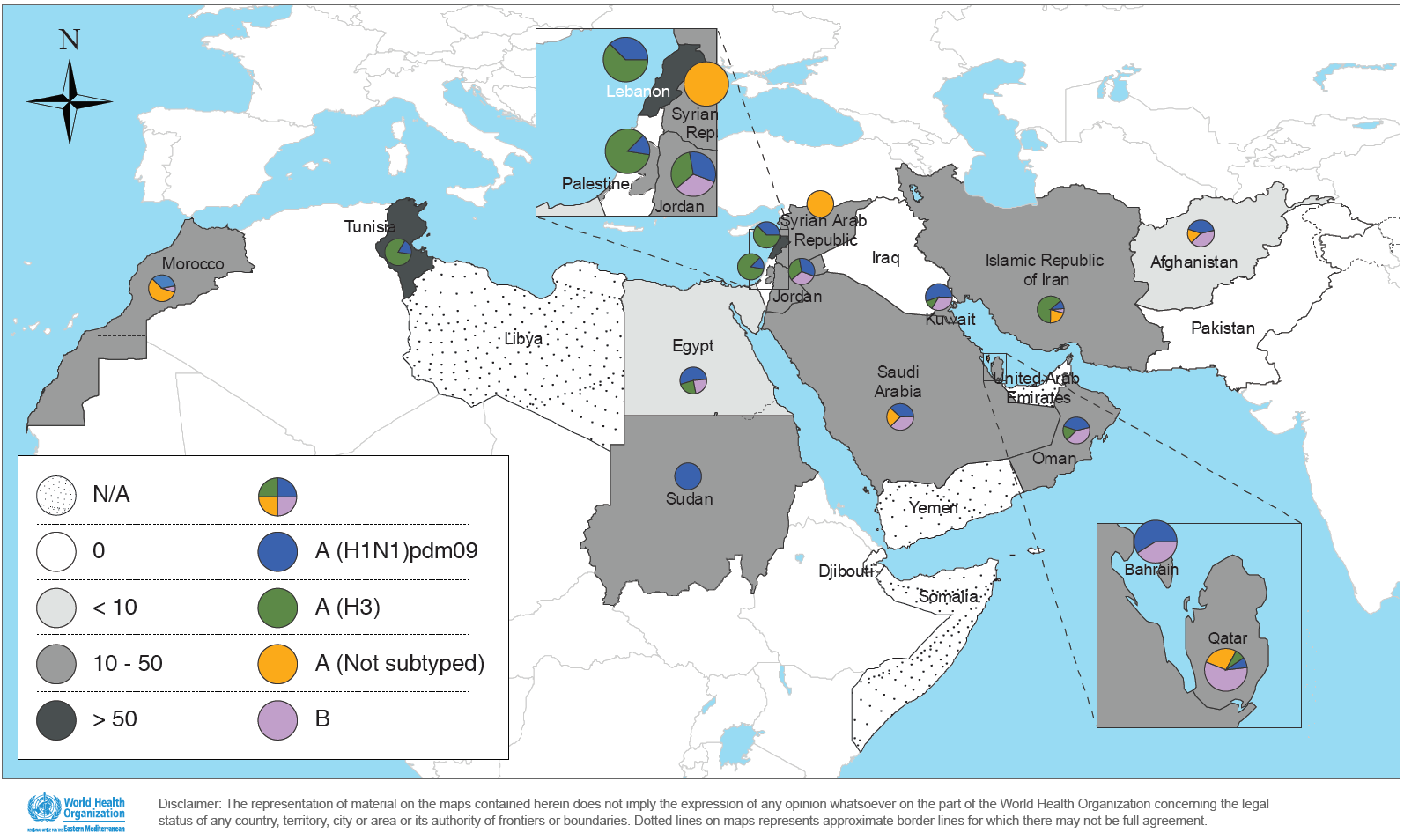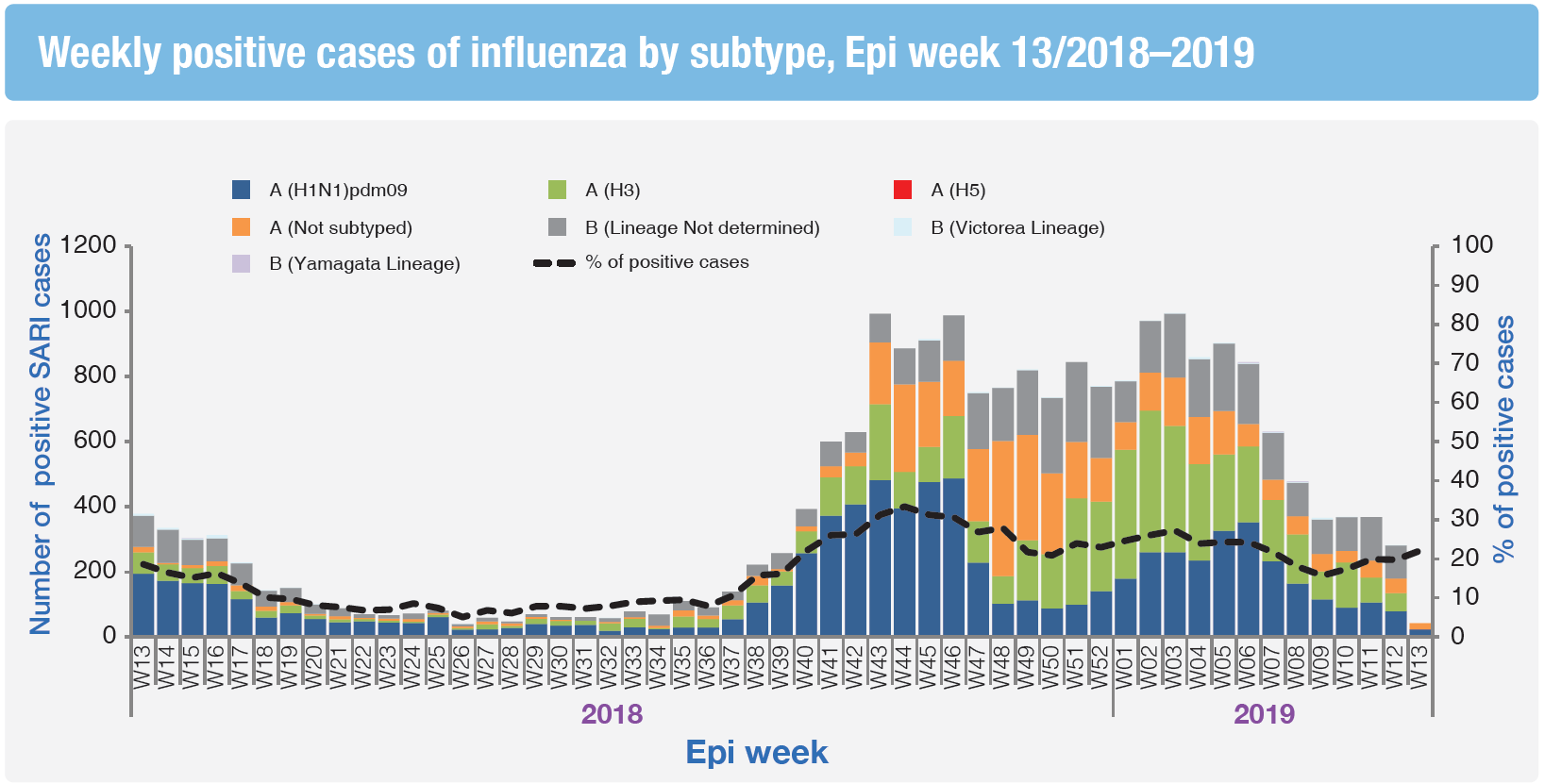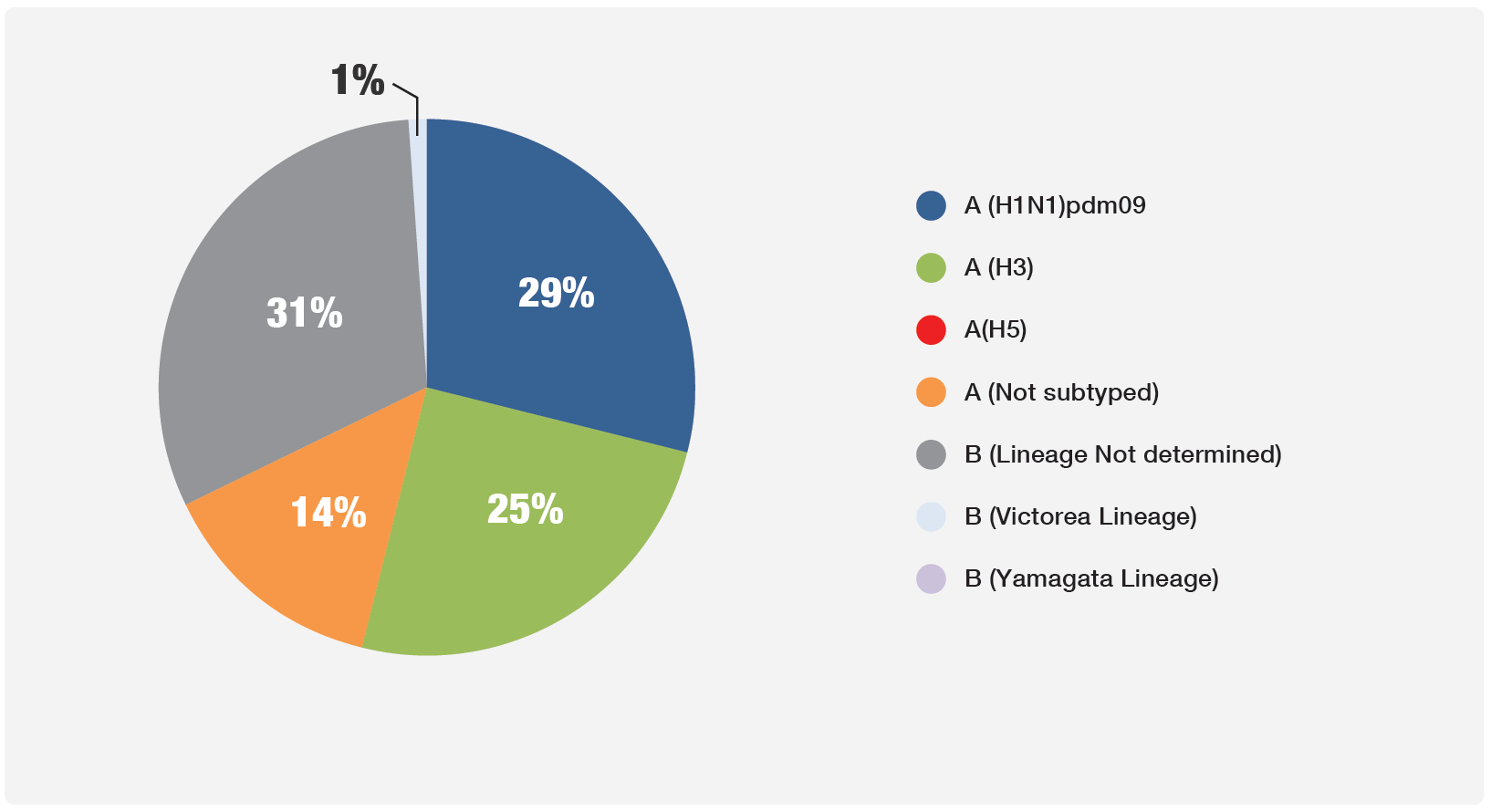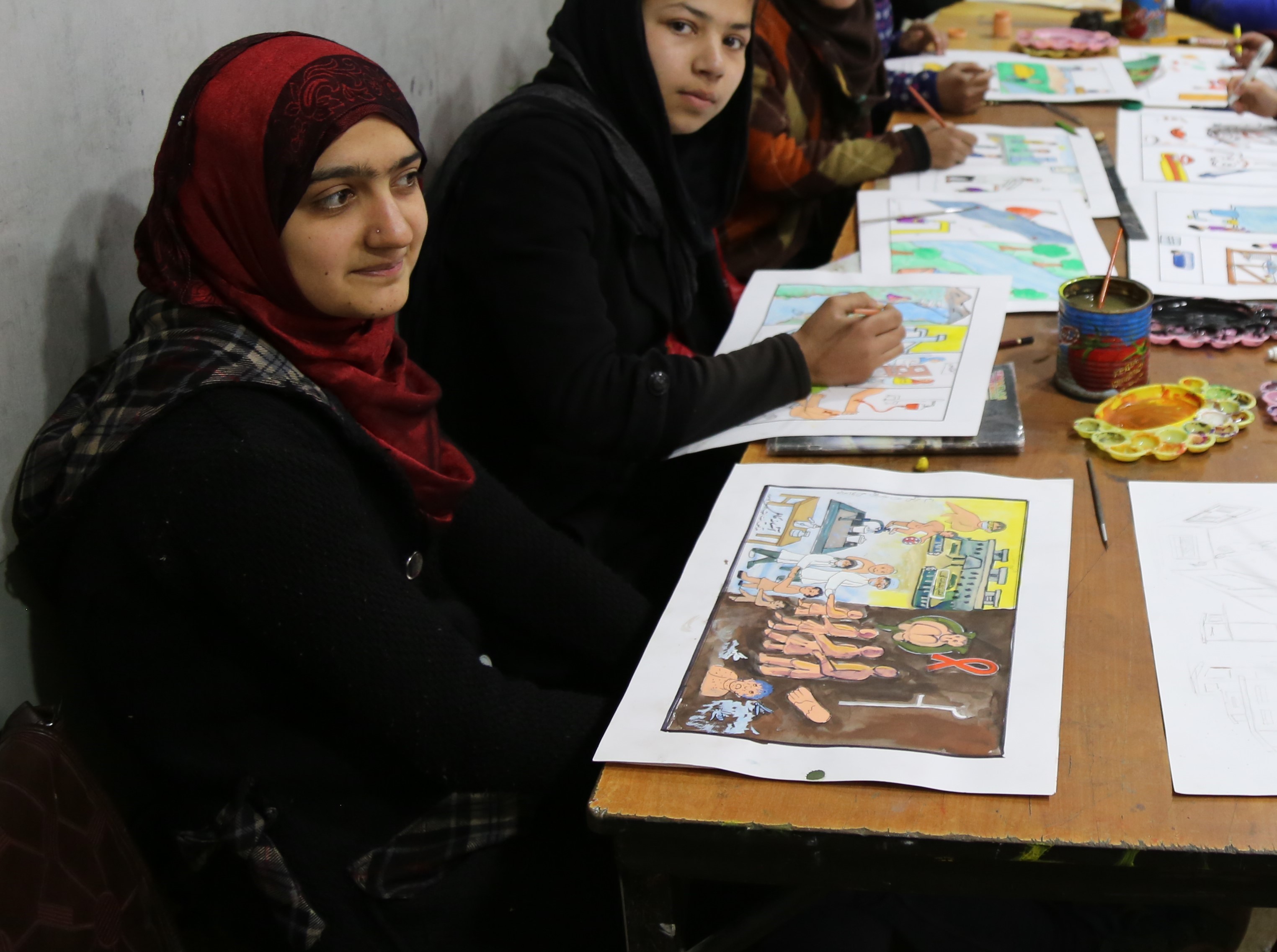وزارة الصحة العراقية تطلق حملة أيام التطعيم الوطنية في العراق بدعم من منظمة الصحة العالمية واليونيسيف

بغداد ، 10 أبريل 2019 - "أنا سعيد جداً لوجودي في هذا المركز" - بهذه الكلمات، أطلق معالي وزير الصحة العراقي، الدكتور علاء العلوان، حملة أيام التطعيم الوطنية في أحد المراكز الصحية في بغداد. وقال الدكتور علاء العلوان "هذا حدث مهم للقطاع الصحي في العراق، إذ إن شلل الاطفال هو أحد الأمراض التي تخلصنا منها. ومع إستمرار حملات التطعيم، سنتمكن من القضاء على شلل الأطفال بتضافر الجهود المستمرة التي يبذلها العاملون الصحيون واهتمام الأسر العراقية بتطعيم أطفالها بغض النظر عن الموقف التطعيمي السابق."
وأضاف الدكتور العلوان قائلاً: "لم تسجل أي حالة من حالات شلل الأطفال لسنوات عديدة في العراق، وسيكفل استمرار حملات التطعيم وتوعية الأُسر عدم رجوع هذا المرض. نأمل ونعمل على تحقيق نسبة عالية من تغطية لقاح شلل الأطفال واللقاحات الأخرى وضمان أعلى مستوى صحي ممكن لجميع سكان العراق".
هذا وقد بدأت الحملة يوم 7 أبريل 2019 لمدة خمسة أيام وتستهدف هذه الجولة من الحملة 5،875،186 طفلاً دون سن 5 سنوات في 145 قضاء موزع على 18 محافظة في العراق. تدعم منظمة الصحة العالمية وزارة الصحة العراقية في توفير التكاليف الفنية والتشغيلية بما في ذلك الحوافز للعاملين الصحيين وتدريب الملقحين وتوفير لوازم القرطاسية لفرق التلقيح بالإضافة إلى إجور النقل والمراقبة المستقلة للحملة.
ويقوم أكثر من 25278 موظف صحي بدعم الحملة للوصول إلى السكان المستهدفين إلى جانب 2920 مشرفًا على مستوى الأقضية والمحافظات وعموم الوطن. وتشرف منظمة الصحة العالمية على الحملة لضمان جودة التلقيح ليصل الى المستوى المطلوب. ويراقب الحملة 290 مراقب مستقل و 38 مشرف من جمعية الصليب الأحمر العراقي بالإضافة إلى فريق من 12 من موظفي منظمة الصحة العالمية المؤهلين والمختصين بالحماية من شلل الأطفال.
هذه الحملة جزء من استراتيجية التطعيم استجابةً لتعزيز ملف المناعة ضد شلل الأطفال. وتتوجه فرق التطعيم من منزل إلى منزل لضمان تلقيح جميع الأطفال المستهدفين. وتحظى الأحياء الفقيرة والمجتمعات المهمشة بالاهتمام كما هو الحال بالنسبة للنازحين داخلياً ومخيمات ومستوطنات اللاجئين.
شارك فريق منظمة الصحة العالمية برئاسة الدكتور أدهم إسماعيل، القائم بأعمال ممثل منظمة الصحة العالمية في العراق، في إنطلاق الحملة في 7 أبريل. وعبّر الدكتور إسماعيل عن سعادته بالحملة قائلاً: "الحملة هي إنجاز رائع لمنظمة الصحة العالمية واليونيسيف ووزارة الصحة العراقية، وتعكس إنجازات الوزارة بقيادة الدكتور علاء العلوان. تقدم منظمة الصحة العالمية الدعم لوزارات الصحة في المركز والاقليم وعلى مستوى المحافظات، مع إعطاء الأولوية لدعم المحافظات ذات الاوضاع الخطرة. ويتم تطعيم الأطفال ضد الشلل من أجل حماية العراق ومستقبل أطفاله."
وشاركت ممثلة اليونيسف، السيدة حميدة رمضاني لاسيكو، في إطلاق الحملة. وحرصاً منها على دعم الحملة، قالت السيدة لاسيكو: "الهدف هو الوصول إلى أكثر من ستة ملايين طفل حتى نتمكن من تعزيز الحصانة. نحن نعمل عن كثب مع وزارة الصحة وباقي الشركاء لضمان تلقيح جميع الأطفال وعدم ترك أياً منهم دون تلقيح". وحثت جميع الآباء على اصطحاب أطفالهم إلى المراكز الصحية والتعاون مع القائمين على التطعيم الميداني حيث يتم إعطاء اللقاح بطريقة آمنة.

منذ أبريل 2014، لم يتم الإبلاغ عن أي حالات جديدة لشلل الأطفال في العراق وذلك بفضل التزام الحكومة القوي وتفاني العاملين الصحيين في الخطوط الأمامية. كان هناك تحسن كبير في الحصانة العامة للسكان بسبب الجهود التي بذلتها وزارة الصحة في العراق ووزارة الصحة في حكومة إقليم كردستان ومديريات الصحة في جميع انحاء القطر. وستساعد الحملة في الحفاظ على مكاسب حصانة السكان لأن التطعيم هو أكثر التدخلات الصحية العامة فعاليةً من حيث التكلفة، والمستفيدون المباشرون منها بشكل كبير هم الأطفال والأمهات.
للمزيد من المعلومات، يرجى التواصل مع:
منظمة الصحة العالمية، مكتب العراق
غيدا مياحي - مسؤولة التواصل والأعلام
البريد الالكتروني :
هاتف : 9647827886765+
Influenza monthly update, March 2019
In the WHO Eastern Mediterranean Region, influenza activity continues to increase in the month of March in many countries reporting data to FluNet and EMFLU namely, Afghanistan, Bahrain, Egypt, Iran (Islamic Republic of), Iraq, Jordan, Kuwait, Lebanon, Morocco, occupied Palestinian territory (oPt), Oman, Pakistan, Qatar, Saudi Arabia, Sudan, Syrian Arab Republic and Tunisia.
In March 2019, roportion of tested cases for influenza in EMR is 88% out of 9,159 enrolled cases, 18% of the tested cases is positive and 82% is negative.
Figure 1: Influenza geographic spread by type and subtypes, March 2019

Influenza activity by sub-type
• In March 2019, no new cases of human influenza A(H5N1) were reported in Egypt.
• In the northern Africa influenza transmission zone, influenza activity continued to decrease in Egypt, Morocco and Tunisia with all seasonal influenza subtypes co-circulating.
• In the western Asia influenza transmission zone, Oman, Saudi Arabia, Qatar and Kuwait continued reporting high co-circulation of influenza types A and B with influenza B virus predominating in Qatar. Jordan, Lebanon, reported cocirculation of A(H1N1)pdm09 and A(H3N2) and few B viruses while oPt and Iraq reported circulation of Influenza A(H1N1)pdm09 and A(H3N2) viruses, with slightly more detections of A(H3N2).
• In southern Asia transmission zone, influenza activity continued to decrease with all seasonal influenza subtypes co-circulating in Afghanistan and Iran (Islamic Republic of) with A(H3N2) predominating.
Source of transmission zones: http://www.who.int/csr/disease/swineflu/transmission_zones/en/

Circulating influenza viruses by subtype
• During March 2019, national influenza centres and influenza laboratories in the Region tested a total of 8,036 specimens for influenza viruses of which 1,453 tested positive (18%).
• The average percentage of positivity rates is 18%, with highest positivity rate recorded in Lebanon, Saudi Arabia and Tunisia.
• Of the viruses tested; 977 (68%) were influenza A viruses, including 413 (29%) influenza A(H1N1)pdm09 virus, 359 (25%) were influenza A(H3) virus and 205 (14%) were influenza A(not subtyped) virus. Influenza B (Lineage Not determined) virus accounted for 443 (31%).
Figure 3: Circulating influenza viruses in the EMR by subtype, March 2019
Source: FluNet and EMFLU
Related link
منظمة الصحة العالمية تدين مقتل طبيبين بسبب الصراع في ليبيا
طرابلس، ليبيا، ٨ أبريل ٢٠١٩— تدين منظمة الصحة العالمية بشدة مقتل طبيبين كانا يعملان على تقديم الخدمات المُلحة للمدنيين في طرابلس.
وأكد المدير الإقليمي لمنظمة الصحة العالمية لشرق المتوسط الدكتور أحمد المنظري على أنه "من غير المقبول أن يتم استهداف العاملين الصحيين أثناء النزاع المسلح. يجب على أطراف الصراع احترام القانون الدولي الإنساني وضمان سلامة العاملين الصحيين والمرافق الصحية. لقد خاطر هؤلاء الأطباء بحياتهم لإخلاء الجرحى من مناطق النزاع، واستهدافهم والمرافق الصحية في مثل هذه الأوقات يزيد الوضع تعقيداً بالنسبة للمدنيين المحاصرين جراء هذا الصراع".
لقد وثقت منظمة الصحة العالمية أكثر من ٤٦ اعتداءً على العاملين الصحيين والمرافق الصحية خلال الفترة من ٢٠١٨- ٢٠١٩ في جميع أنحاء ليبيا. وتسببت هذه الهجمات في مقتل ٨ من العاملين الصحيين والمرضى وجرح ٢٤ آخرين. ومع استمرار الصراع المحتدم منذ سنوات في ليبيا، تعرضت المئات من مراكز الرعاية الصحية الأولية وأكثر من ٢٠ مستشفى للضرر والدمار أو الإغلاق.
ويضيف الدكتور المنظري: "هذه الهجمات على المرافق الصحية تحرم آلاف الأشخاص من الرعاية الصحية الأساسية. لذا ندعو جميع الأطراف إلى احترام الالتزامات الدولية وضمان قدرة العاملين الصحيين على أداء مهامهم المنقذة للحياة".
لمزيد من المعلومات :
Misbah M. Sheikh
Manager External Relations
Health Emergencies Department
WHO Regional Office for the Eastern Mediterranean
Email:
Cell: +20 1212 733 994
Afghan children learning to paint at the Aschiana Foundation paint Primary Health Care

Every year on the occasion of World Health Day (WHD), WHO across the Asia and the Pacific Region, which includes Afghanistan, organizes an art competition for school children aged 8 to 18 years. The aim is to raise children’s awareness on different health topics.
For 2019 the focus of the WHD was primary health care. WHO Afghanistan worked with children from Aschiana foundation in Kabul to produce works of art portraying Primary Health Care as they know it.
Some paintings were selected and sent to Cairo Egypt for evaluation and competition with other countries. Nargis, 15, who wants to be a medical doctor in the future, said her painting will win the competition.
Ayesha, 9, who wants to be a famous artist in the future, said her painting will win for Afghanistan.
Nargis, 15, said, “people living without primary healthcare can't have a good life. They are as if in the dark. All of us have to help people out to brightness with primary health care for all".
Nargis won the 5th place on the art competition and received cash incentive, but also a certificate of merit from WHO.








